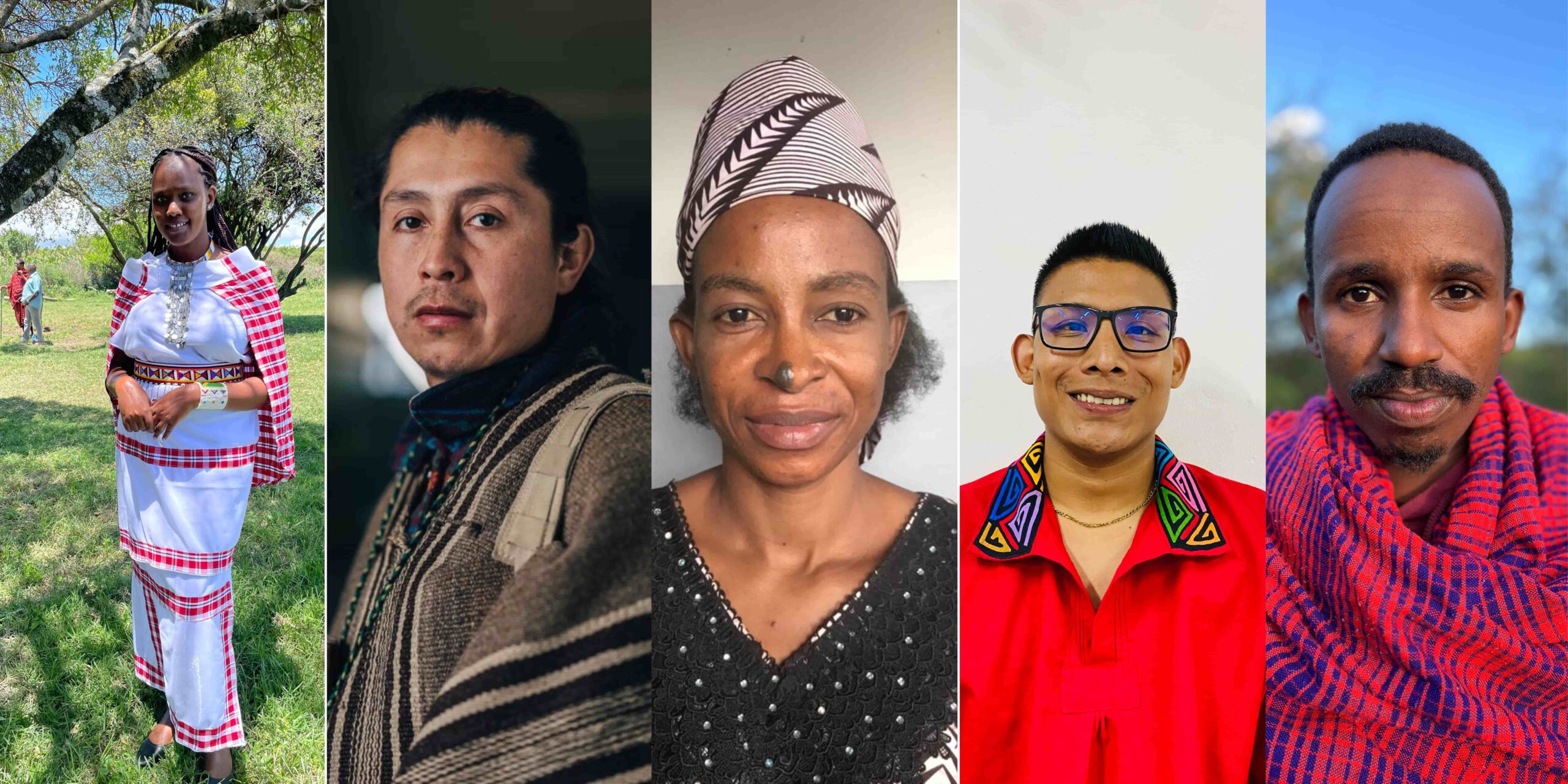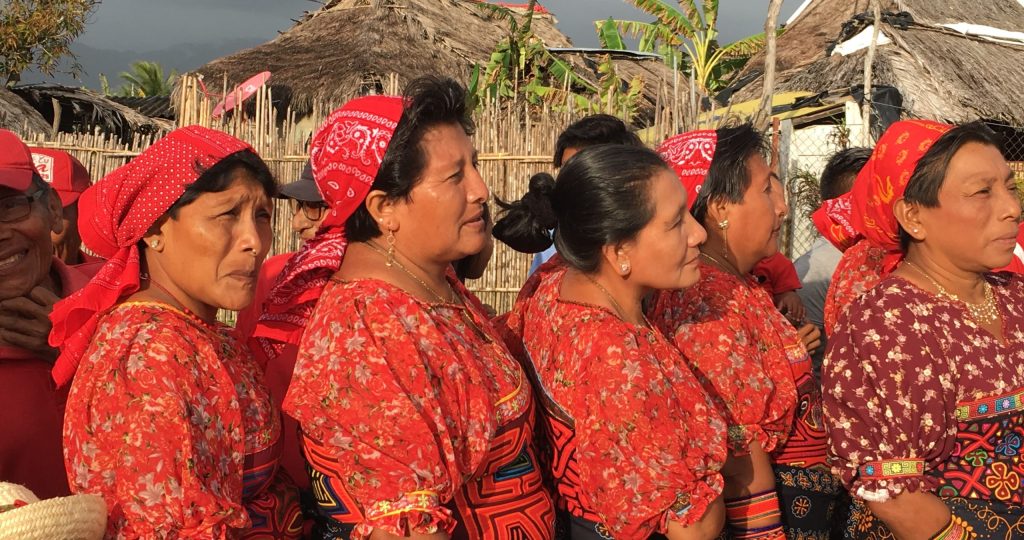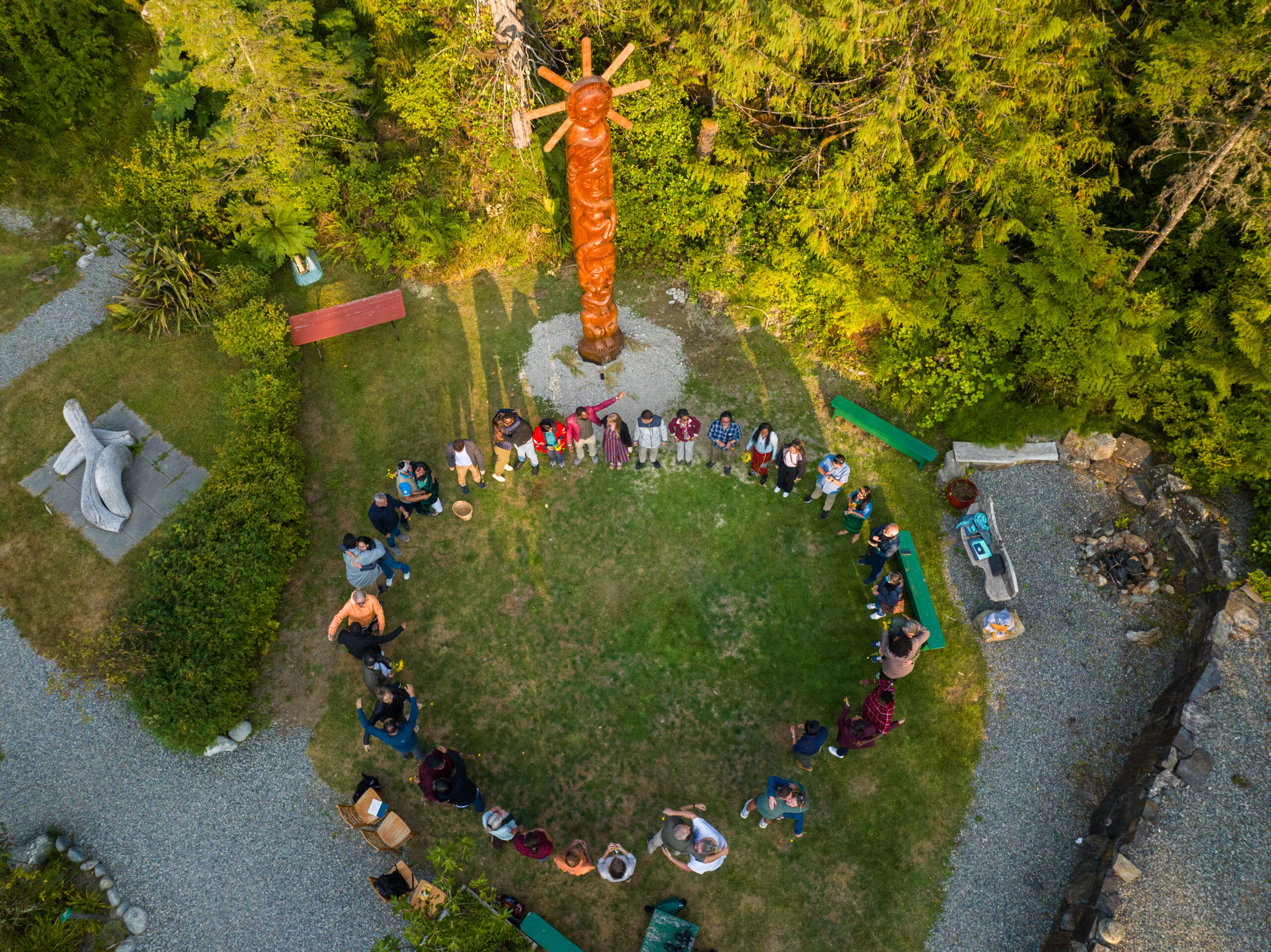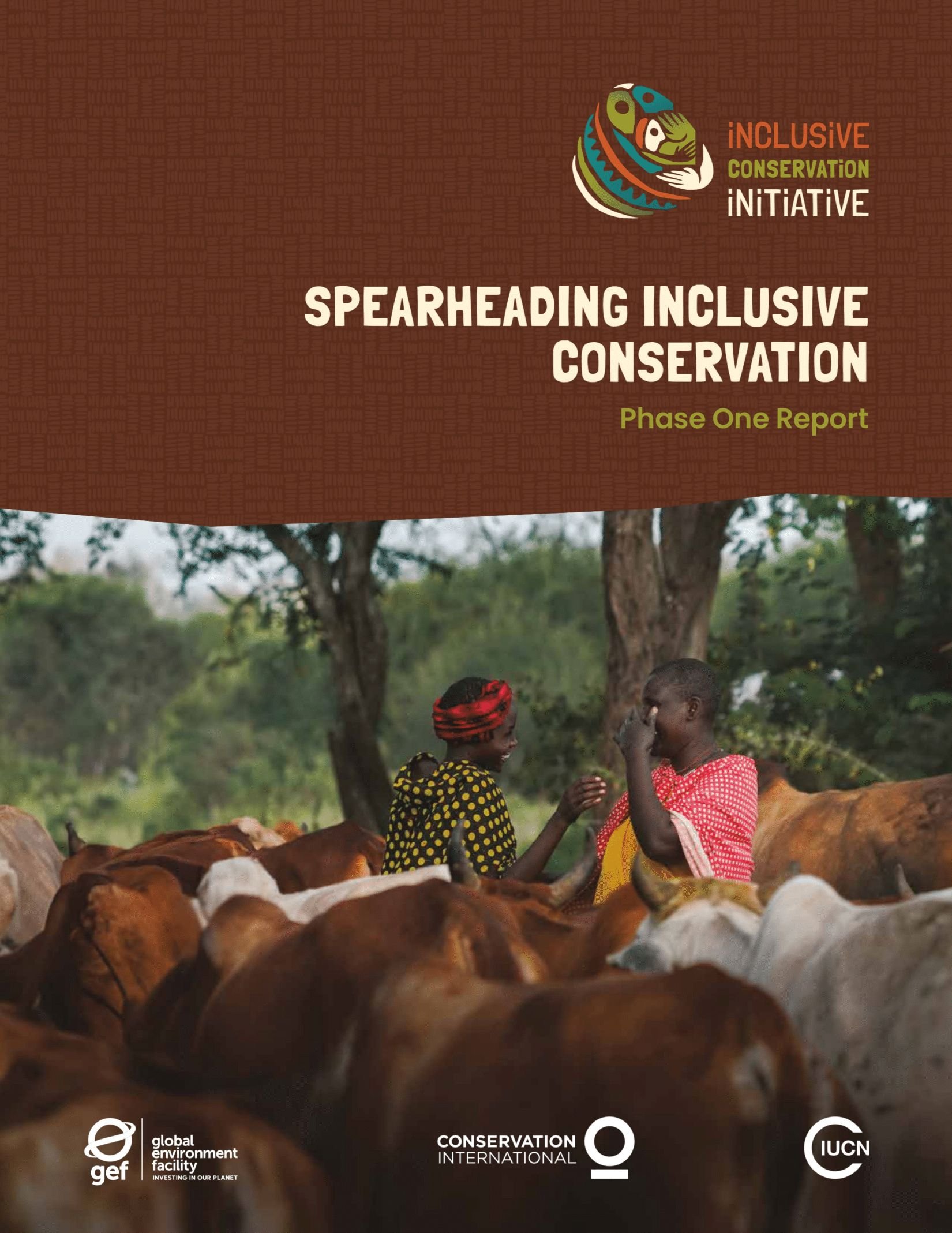
Protecting the Earth, Indigenous and local solutions lead the way

Indigenous stewardship of nature can revitalize our globe — investing in IPLC-led solutions means investing in our planet.
The Inclusive Conservation Initiative (ICI), a Global Environment Facility (GEF) project implemented by the International Union for Conservation of Nature (IUCN) in partnership with Conservation International (CI), is supporting USD 25 million in direct financing to Indigenous Peoples and Local Communities and leading on sharing knowledge and strengthening capacities to make the case for direct conservation finance.

Meet the lead organizations from Asia and the Pacific, Central America, Meso America and sub-Saharan Africa and see how they plan to transform conservation through the Inclusive Conservation Initiative:
Asia and the Pacific




Our journey starts in Nepal, a key ecological hotspot where Indigenous Peoples have lived since time immemorial. Here, the Nepal Federation of Indigenous Nationalities (NEFIN) – which unites all the Indigenous groups recognized by the government of Nepal – advocates for the protection of Indigenous rights in the climate change context. ICI will support NEFIN’s work in the Annapurna Conservation Area, a rich biodiversity hub and ancestral Indigenous land spanning five districts. Through the project, NEFIN aims to strengthen IPLC’s governance structures, document and disseminate IPLC’s knowledge and practices on environment conservation to enhance a global understanding on IPLC’s contributions to global environment benefits, preserve cultural sites, and develop IPLC-based green enterprises and biodiversity financing mechanisms to strengthen IPLC’s financial and economic sustainability.
Moving down east we reach the Thai highlands, where a consortium of organizations convened by the Indigenous Peoples’ Foundation for Education and Environment (IPF) works to promote Indigenous Peoples’ rights, including education, self-determined development, customary land use, and natural resource management. Through ICI, IPF will work with 77 highland communities of 7 Indigenous Peoples in Thailand in an area encompassing more than 429,000 hectares. The project will support good practices in resource, water, and forest management by highland ethnic peoples, foster understanding and acceptance of rights in resource management in accordance with traditional culture and customs, mitigate the impacts of climate change while preserving biodiversity, and increase community income and food security.
After crossing the Pacific Ocean, we encounter the Bose Vanua o Lau (the formal association of the traditional chiefs of Lau, representing 30 inhabited Islands and their 9,600 inhabitants) in Fiji and the House of Ariki (an association of ten Indigenous chiefs) in the Cook Islands. Through ICI, the two will work together to advance Indigenous Peoples’ goals for sustainable resource use and management – including strengthening the management of coastal and offshore Marine Protected Areas (MPAs), and the restoration of degraded and terrestrial protected areas – and strengthen their resilience to climate change through delivery and revitalization of traditional farming skills and knowledge. Specifically, the Vanua o Lau aims to develop the enabling conditions for the management of the Lau Seascape at scale by strengthening traditional governance at community and island level across the Lau Province, while the House of Ariki will work to integrate critical cultural considerations, including identification of traditionally and culturally significant sites, within the design of the Marae Moana Marine Park.
Meso America



In Meso America, a consortium of Indigenous organizations led by Sotz’il is working to foster the Indigenous use, management, and conservation of natural resources in the regions of the Ru K’ux Abya Yala and to promote the Utz K’aslemal (el buen vivir – living in harmony) as a model of Indigenous life. Working in an area composed by three biocultural territories (Kaqchikel and K’iche’ Volcanic Chain, Lachuá and Caribbean Rainforests of Guatemala, and Guna of Panama) and spanning more than 56,000 hectares of land stretching from Guatemala to Panama, through ICI Sotz’il plans to strengthen Indigenous institutional systems, promote intergenerational exchanges and gender equality, bolster Indigenous-led natural and cultural resource management in the context of the COVID-19 recovery, and promote Indigenous green economy for the benefit of all.
South America




In the Madre de Dios river basin in Peru, an ancestral tropical forest territory home to several Indigenous communities, the Native Federation of Madre de Dios River and tributaries (FENAMAD) – a member of IUCN and the ICCA Consortium – advocates to legitimately represent and defend the collective will of all Indigenous Peoples of Madre de Dios, including those living in isolation and initial contact. Through ICI, FENAMAD aims to improve the management of the territories and the conservation of their biodiversity as well as the recognition of Indigenous Peoples as active partners in the definition of conservation policies, strengthen Indigenous Peoples’ resilience in the face of environmental, climate, and health crises, enhance the protection of the communities living in isolation as well as the one of women and defenders, and bolster Indigenous Peoples’ participation in international conservation and human rights spaces and networks.
Moving down the Andean Cordillera, we find ourselves in the Futa Mawiza biocultural territory, where an alliance of organizations dedicates its work to safeguarding the governance of the territorythrougha process of self-strengthening based on the Mapuche cosmovision, knowledge and traditional practices, for the full exercise of Indigenous collective rights. Working with ICI, the Futa Mawiza Initiative will conduct territorial analyses and planning to strengthen the management and governance of the Futa Mawizabiocultural territory, promote the küme felen (collective well-being), conduct national and international advocacy for culturally appropriate recognition and support for the territory, exchange Mapuche knowledge and practices, and strengthen the role of the Mapuche traditional authorities and territorial leaders for better territorial management and governance and the full exercise of Indigenous rights.
Sub-Saharan Africa



In Sub-Saharan Africa, a network of communities and grassroots organizations called Alliance Nationale d’Appui et de Promotion des Aires et territoires conservés par les Peuples Autochtones et Communautés locales en République Démocratique du Congo (ANAPAC) is committed to strengthen, enhance, and secure the areas and territories conserved by Indigenous Peoples and Local Communities in the Democratic Republic of the Congo (DRC). Working in three bio-cultural landscapes – encompassing the non-flooded forests in the East, the flooded forests in the West, and the dry lands of the Eastern DRC – ICI will assist ANAPAC in identifying and documenting the presence of IPLCs in the three major bio-cultural landscapes of the DRC and in enhancing the capacity building of IPLC’s institutions in natural resource governance and management. The project also aims to strengthen IPLC resilience to external threats, advocate for their legal recognition in the DRC, and develop local economic activities to support part of the costs of conservation.
Moving east we reach the kenyan rangelands, where the Indigenous Movement for Peace Advancement and Conflict Transformation (IMPACT) supports Indigenous Peoples in securing recognition and inclusion. Through ICI, IMPACT will work with Indigenous communities to document and seek recognition for the Upper Ewaso Territory River Basin – an area that supports more than 3.5 million people across ten counties, whose majority are Indigenous pastoralists communities – as a Territory of Life (also known as an ICCA), which is a territory or area conserved by Indigenous Peoples and Local Communities. By doing so, IMPACT aims to restore, preserve and promote traditional governance systems as well as Indigenous knowledge and practices, secure Indigenous rights to land and natural resources, restore sacred sites and totems, and preserve Indigenous languages.
Traveling down to Tanzania, we encounter the Ujamaa Community Resource Team (UCRT), an organization that aims at improving the lives of pastoralist, agro-pastoralist, and hunter-gatherer communities in northern Tanzania by empowering them to sustainably manage and benefit from the natural resources on which their livelihoods depend. Working through ICI in Northern Tanzania, a globally significant ecological system of rangelands extending south and east of the greater Serengeti – Ngorongoro that supports a rich diversity of wildlife and people. UCRT’s goals are to legally secure communal village lands for Indigenous communities in three key biodiverse landscapes through participatory land use planning and land tenure mechanisms, train and coach village councils and natural resource committees responsible for managing rangeland and forest resources for the areas to be sustainably managed by Indigenous governing structures, and develop sustainable natural resource-based income generating activities.
Through the Inclusive Conservation Initiative, IPLCs will take the lead in identifying local priorities, developing inclusive, culturally appropriate processes for decision-making, strategies, and implementing action. These investments will be critically important to transform conservation actions for the benefit of all and to place climate finance in the hands of nature’s best stewards.


